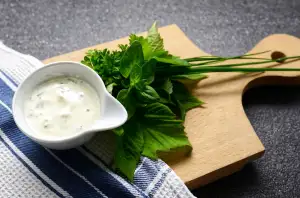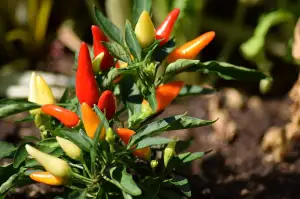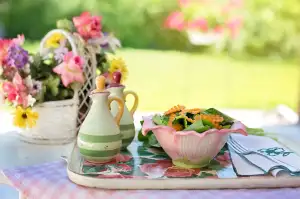Mastering Measurements: Convert 3/4 Cup to Grams for Perfectly Measured Ingredients | Recipes

- Explanation of the common use of cups in American recipes
- Overview of the conversion factor for converting cups to grams
- Step-by-step guide on how to convert 3/4 cup to grams
- Examples of common ingredients and their conversion from 3/4 cup to grams
- Tips and tricks for accurate ingredient measurements in recipes
Accurate ingredient measurements are crucial for achieving consistent and delicious results in recipes. Whether you're a seasoned chef or a kitchen novice, precise measurements ensure that the flavors and textures of your dishes turn out just right. Too much or too little of an ingredient can throw off the balance of flavors and affect the overall outcome of your dish. That's why it's essential to understand how to measure ingredients accurately, so you can confidently create culinary masterpieces every time you step into the kitchen.
Explanation of the common use of cups in American recipes
In American recipes, the use of cups for ingredient measurements is quite common. Cups provide a convenient and easy way to measure ingredients, especially for home cooks who may not have access to a kitchen scale. The standard measuring cup used in American recipes is a 240 milliliter (ml) cup, which is equivalent to 8 fluid ounces. This measurement allows for consistent and reproducible results when following recipes. Cups are typically used for dry ingredients such as flour, sugar, and spices, as well as liquid ingredients like milk or water. It's important to note that the volume of certain ingredients can vary depending on how they are packed into the cup. For example, lightly scooping flour into a cup will result in less flour compared to if it was densely packed. Despite this potential variation, using cups in American recipes has become a widely accepted practice that many home cooks are familiar with.
The metric system is a universal measurement system used in many countries around the world. It provides a consistent and precise way to measure ingredients, making it ideal for cooking and baking. In the metric system, grams are commonly used to measure both solids and liquids. Unlike cups, which can vary in size and volume, grams provide a standardized unit of measurement that ensures accuracy in recipes. By using grams, you can achieve consistent results every time you cook or bake, ensuring that your dishes turn out perfectly.
Overview of the conversion factor for converting cups to grams
When it comes to converting cups to grams, it's important to understand the conversion factor. The conversion factor varies depending on the ingredient being measured. In general, 1 cup is equal to approximately 236.59 grams. However, this can vary slightly depending on the density of the ingredient. For example, 1 cup of flour may weigh less than 1 cup of sugar due to differences in density. It's always a good idea to consult a reliable conversion chart or use a digital scale for more accurate measurements. By understanding the conversion factor, you can ensure that your recipes turn out perfectly every time.
Step-by-step guide on how to convert 3/4 cup to grams
To convert 3/4 cup to grams, follow these simple steps:
1. Determine the conversion factor: The conversion factor for cups to grams varies depending on the ingredient. For example, the conversion factor for flour is approximately 125 grams per cup.
2. Multiply the conversion factor by the number of cups: In this case, multiply 125 grams (conversion factor for flour) by 3/4 (number of cups).
3. Calculate the result: Multiply 125 grams by 3 and divide by 4 to get the equivalent in grams. The result is approximately 93.75 grams.
By following these steps, you can easily convert any measurement from cups to grams and ensure accurate ingredient measurements in your recipes.
Examples of common ingredients and their conversion from 3/4 cup to grams
Here are some examples of common ingredients and their conversion from 3/4 cup to grams:
1. All-purpose flour: 96 grams
2. Granulated sugar: 150 grams
3. Butter: 170 grams
4. Rolled oats: 60 grams
5. Brown sugar: 150 grams
6. Chopped nuts: 90 grams
7. Cocoa powder: 75 grams
These conversions may vary slightly depending on the density of the ingredient, but they provide a good starting point for accurately measuring your ingredients in recipes.
Tips and tricks for accurate ingredient measurements in recipes
To ensure accurate ingredient measurements in your recipes, here are some helpful tips and tricks:
1. Use the correct measuring tools: Invest in a set of measuring cups and spoons specifically designed for dry ingredients. This will ensure that you are using the right amount of each ingredient.
2. Spoon and level: When measuring dry ingredients like flour or sugar, use a spoon to scoop the ingredient into the measuring cup and then level it off with a straight edge. Avoid packing the ingredient into the cup, as this can lead to inaccurate measurements.
3. Use a kitchen scale: For even more precision, consider using a kitchen scale to weigh your ingredients in grams. This is especially useful when working with ingredients like butter or chocolate that can be difficult to measure accurately using cups.
4. Read the recipe carefully: Make sure to read through the recipe before starting and familiarize yourself with the specific measurement units used. Some recipes may require metric measurements, while others may use cups or tablespoons.
5. Convert measurements accurately: If you come across a recipe that uses different measurement units than what you're used to, take the time to convert them accurately. Use reliable conversion charts or online calculators to ensure precise measurements.
By following these tips and tricks, you'll be able to achieve consistently delicious results in your cooking and baking endeavors. Accurate ingredient measurements are key to mastering any recipe and ensuring that your dishes turn out perfectly every time.
In conclusion, using grams for ingredient measurements in recipes offers both convenience and accuracy. Unlike cups, which can vary in size and volume, grams provide a standardized unit of measurement. This ensures consistent results when cooking or baking. By converting measurements to grams, you eliminate the need for guesswork and can easily scale recipes up or down. So whether you're a kitchen novice or a culinary pro, mastering measurements in grams will help you achieve perfectly measured ingredients every time.
Published: 07. 12. 2023
Category: Recipes



